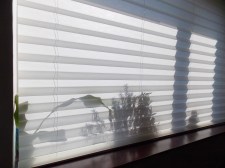Beyond Spray Cans: Exploring Different Techniques in Street Art Creation
Street art has become an integral part of modern urban culture, with its vibrant colors and thought-provoking designs adorning walls, buildings, and public spaces. While spray cans are often associated with street art, there is a wide range of techniques and mediums used by artists to express their creativity. In this article, we will dive deeper into the world of street culture and graffiti, exploring different techniques that artists employ to create captivating works.
Stencil Art: Making a Statement with Precision
One popular technique in street art is stencil art. Artists create intricate stencils by cutting out specific shapes or patterns on a sturdy material such as cardboard or plastic. These stencils are then held against the surface to be painted while spray paint or brush strokes are applied over them. The result is a precise and detailed image that can be replicated multiple times.

Stencil art allows artists to convey powerful messages through their work. By using bold symbols or text, they can address social issues or make political statements in a visually striking manner. Stencil art also offers the advantage of being quick to execute, making it a popular choice for artists who want to create large-scale murals within limited time frames.
Wheatpaste: Transforming Streets into Galleries
Another technique widely used in street art is wheatpaste. This method involves creating images on paper or other materials using various mediums such as paint, ink, or markers. The artwork is then applied to walls or other surfaces using wheatpaste—a mixture of water and wheat flour—as an adhesive.
Wheatpaste allows artists to work on their designs beforehand in a controlled environment before taking them to the streets. It offers flexibility in terms of size and complexity since the artwork can be created in smaller pieces and assembled together later on-site. Additionally, wheatpaste artworks have a temporary nature as they can be easily removed without damaging the underlying surface, making it a preferred choice for artists who want to share their work without causing permanent alterations.
Mosaic Art: Piecing Together Urban Landscapes
Mosaic art is a technique that involves creating images or patterns by assembling small pieces of glass, tile, or other materials. This method has been utilized in various art forms for centuries and has found its way into the realm of street art as well. Artists use adhesive to affix the small pieces onto walls or other surfaces to create intricate and visually appealing designs.
Mosaic art in street culture often depicts urban landscapes, abstract patterns, or portraits. The use of different materials adds texture and depth to the artwork, giving it a unique visual quality that stands out from traditional paintings or murals. Mosaic art also has the advantage of being durable and weather-resistant, making it suitable for outdoor installations that can withstand the elements over time.
Yarn Bombing: Adding Colorful Knitted Creations to Urban Spaces
Yarn bombing, also known as guerrilla knitting or yarn graffiti, is a form of street art that involves covering public objects such as trees, lampposts, or statues with colorful knitted or crocheted creations. This technique adds a touch of whimsy and warmth to urban spaces while transforming ordinary objects into vibrant works of art.
Yarn bombing allows artists to bring a soft and tactile element into street culture while challenging traditional notions of what constitutes graffiti or public art. It often elicits smiles and positive reactions from passersby as they encounter unexpected bursts of color in their daily routines. Yarn bombing is also temporary and easily removable without causing damage, making it an accessible form of expression for both experienced artists and beginners.
In conclusion, street culture and graffiti encompass a wide range of techniques beyond spray cans. From stencil art to wheatpaste, mosaic art to yarn bombing, each technique offers unique possibilities for artists to create captivating works that engage and inspire viewers. As street art continues to evolve, these techniques will undoubtedly keep pushing the boundaries of creativity in public spaces, leaving an indelible mark on the urban landscape.
This text was generated using a large language model, and select text has been reviewed and moderated for purposes such as readability.


